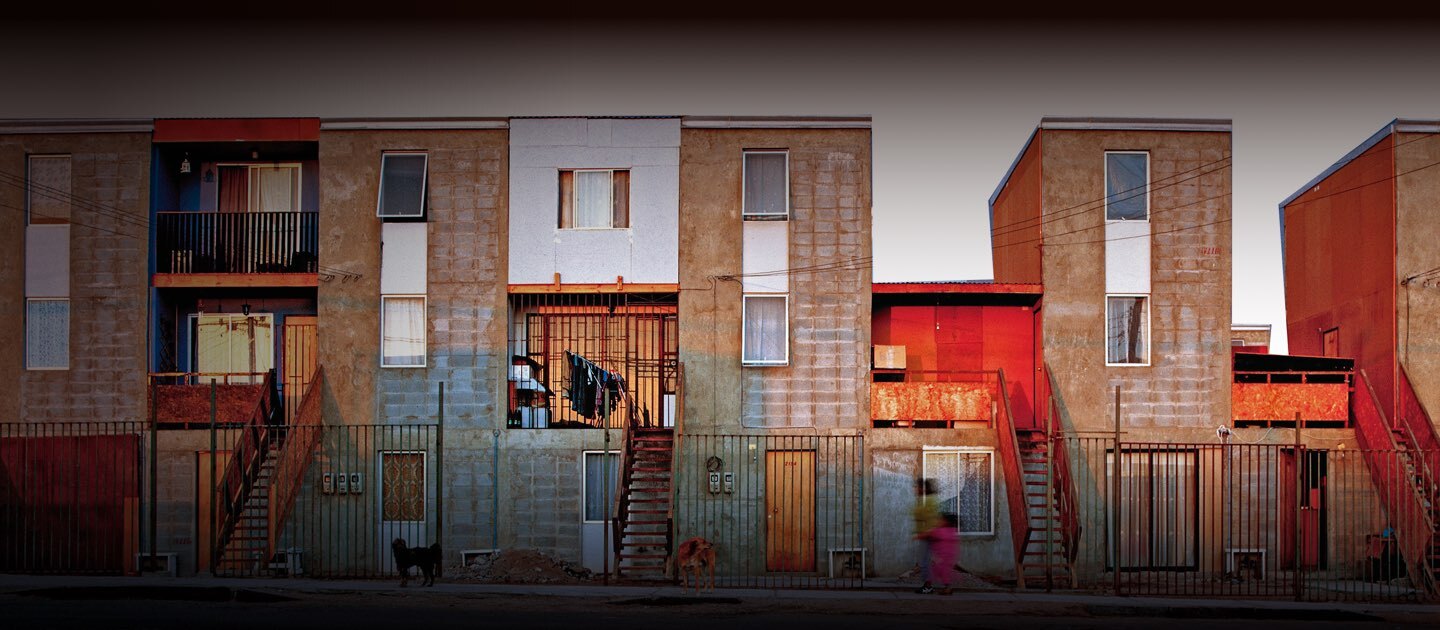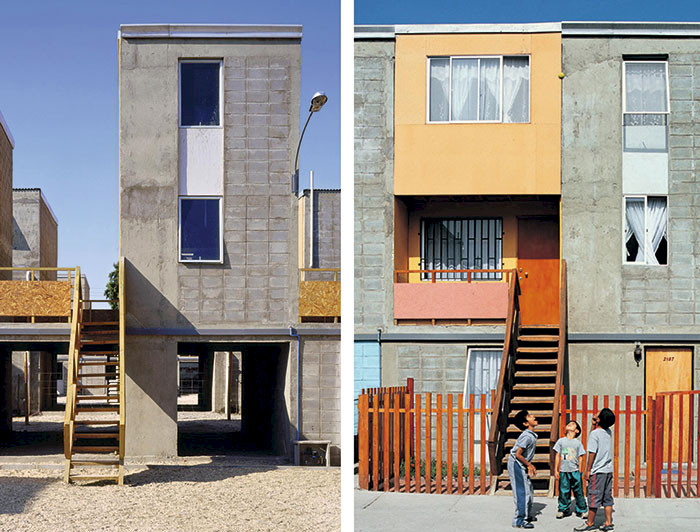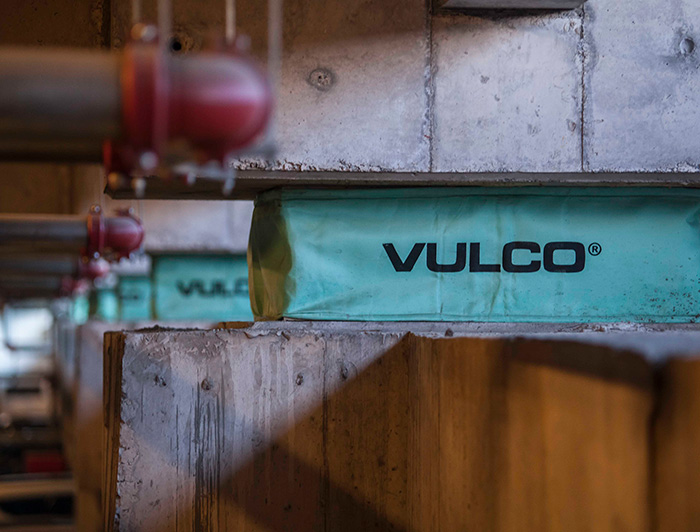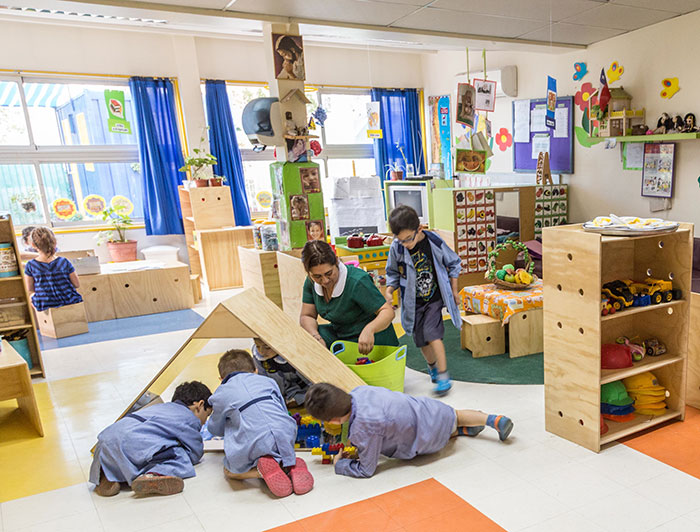
Technology Transfers That Improve People's Quality of Life
Innovations created at Universidad Católica have been transferred to companies, public agencies, and foundations, impacting thousands of people's quality of life in areas as diverse as social housing, seismic technologies, thyroid cancer detection, and educational systems for early childhood.

photo_camera Transferring the knowledge generated in laboratories, the field and classrooms, improving people's quality of life, is the focus of UC, as Research Vice President Pedro Bouchon explained. This is what Elemental has done, a company born inside the university, focused on designing low-cost social housing. (Credit: Quinta Monroy Project, Iquique.)
On October 6, Chile celebrated the National Day of Science and Technology in an unprecedented scenario, marked by the Covid-19 pandemic. In this context, the transfer of research findings born in the University becomes a priority issue, thanks to the fact that society has become aware that the solutions to face this crisis and its effects will come from scientific and technological development.
According to Vice President for Research, Pedro Bouchon: "Our challenge as a university is to promote an ecosystem that allows the transfer of knowledge generated from the laboratories, field, and classrooms, in connection with society, to different types of organizations, both public and private, positively impacting the quality of life of people, addressing increasingly complex phenomena, from education, engineering, agronomy, to even those imposed on us by a pandemic."
"During these months, the role of researchers who have put their academic work at the service of society's needs has been more visible than ever. They have been creating innovations that help us understand and better face the multiple fronts of the pandemic.," explained Alvaro Ossa, Director of the Office of Transfer & Development.
High Impact Transfers

Since the end of the last decade, Universidad Católica began to promote the protection and transfer of its research results widely. In 2007, the first formal license was signed for the transfer of the "Modular Prefabricated Construction System to be used in the construction of different types of buildings."
Developed by a research team of the Faculty of Architecture, Design, and Urban Studies led by faculty member Alejandro Aravena through the spin-off company of UC, Elemental, which allowed this innovation to be mass-produced and benefit thousands of people through new and better social housing.
To date, Elemental has led emblematic social housing projects throughout Chile, designing more than 2,000 houses delivered by the State.
In 2012, there was another milestone for UC: the transfer of the technology "Devices and dissipators aimed at reducing vibrations," created by a team led by the current dean of the Faculty of Engineering, Juan Carlos de la Llera, and licensed to the spin-off company Sirve Inc., which offers innovative solutions to the challenges of structural and seismic engineering.
Thanks to this transfer agreement, the anti-seismic devices that emerged from research results are now installed in significant buildings both in Chile and abroad. Some examples: Titanium La Portada skyscraper, the new Hospital Militar, and the UC Anacleto Angelini Innovation Center in Santiago.
"These structures are now seven to eight times safer than any other in Chile," said Juan Carlos de la Llera, leader of the research team that continues to develop earthquake protection solutions.
In 2015, the "Thyroid Cancer Diagnostic Kit" developed by a team from the School of Medicine, in partnership with the BMRC Consortium (Spanish acronym for Biomedical Research Consortium), was transferred.
Dr. Hernán González created a highly accurate test that detects thyroid cancer. When a thyroid nodule has specific characteristics, doctors request a biopsy. However, the problem is that 20% of biopsies produce an uncertain or indeterminate result. In those cases, the medical recommendation is to perform preventive surgery to remove the thyroid; however, only 25% of these cases are malignant.
The Thyroid Print Test solves this by providing a high precision result, which allows them to avoid unnecessary surgeries in patients with an uncertain outcome. The innovation was transferred through a license agreement to the spin-off company UC GeneproDX, which currently develops and markets the invention nationally and internationally.
More recently, in 2018, the "Physical Learning Environment Modeling System (MAFA Spanish acronym)" was licensed to Junji, the public agency in charge of the country's nurseries and kindergartens. The new pedagogical system created by an interdisciplinary team of researchers from the School of Design and the Faculty of Education is already being implemented in 16 pilot kindergartens in six Chile regions, directly benefiting more than 1,300 children who attend the public kindergarten system.
"In 2020, the innovation was licensed to the University of Talca. This will allow us to expand the MAFA system to the initial teacher training and advance the continuous training in the system," explained Cynthia Adlerstein, professor of the Faculty of Education and project leader, along with Patricia Manns and Alberto González, faculty members of the School of Design.
MAFA is a technology that changes the paradigm of learning environments in Chilean nursery education, surpassing the monofunctional furniture that copies adult or school ergonomics in children's sizes. It implements learning communities where pedagogical teams develop practices that empower children to explore, build, create, and appropriate educational spaces.
MAFA allows children to interact with educators and educator assistants as protagonists and co-constructors of flexible and meaningful physical environments for learning. The coming stages aim to expand technology transfer in Chilean education and respond to international demands to adjust the technology for early childhood education in Latin America.

What is a License?
A license agreement is a document by which the holder of a right authorizes a third party to exercise the right of exploitation, under certain conditions, in a defined time and place, in exchange for an economic benefit or free of charge.
"In addition to impacting the academic community through publications and conferences, technology transfer aims to transform research results into products or services that improve the quality of life of people. Within this framework, it is understood that transferring a research result through a license can be with or without profit, depending on the strategy that one wants to follow or the purposes of its creators," explained Consuelo Sotomayor, Technology Transfer Senior Manager.
In the last three years, Universidad Católica has signed more than 60% of its historical licenses. One-third of these licenses have been transferred free of charge to public entities or non-profit foundations associated with the widespread use of technologies with high social impact. Two-thirds of them receive the payment of royalties.
Regarding the impact areas, UC innovations have been transferred to the most diverse economy areas, such as the agrifood, education, health, construction, and engineering sectors.
"The University will continue to promote the transfer of research findings strongly. We know that the quality of science performed at UC is world-class and can improve people's quality of life. The professionals of the Office of Transfer & Development., from theOffice of the Vice President for Research, are prepared to support researchers in raising funds for their R+D projects, to define the best strategy for intellectual protection, and to look for potentially interested parties in licensing their innovations," concluded Director Ossa.
Learn more about how to protect and transfer research results at UC.


